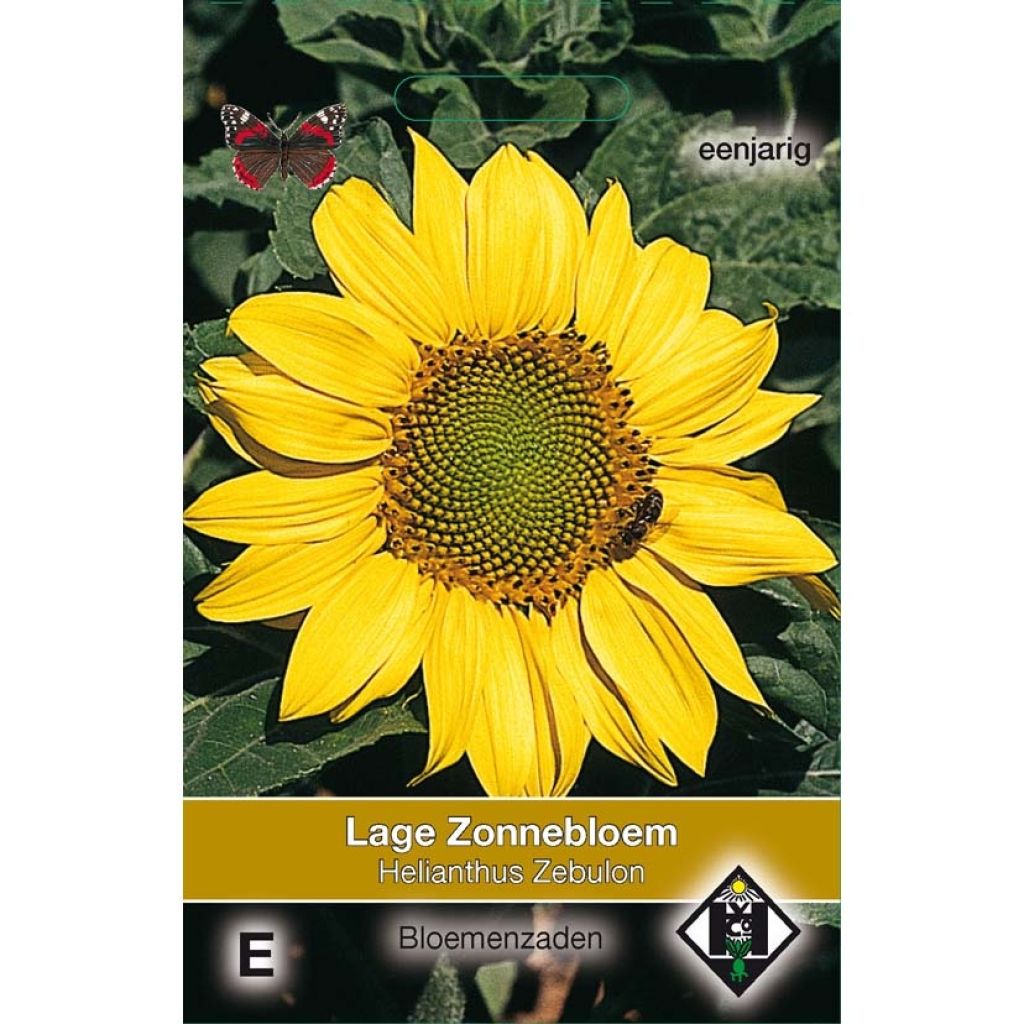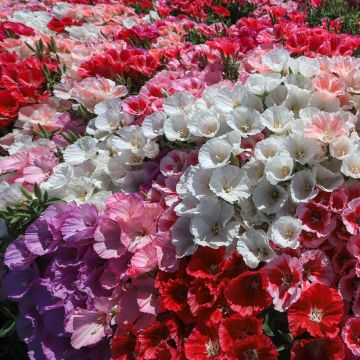

Sunflower Zebulon Seeds - Helianthus annuus
Sunflower Zebulon Seeds - Helianthus annuus
Helianthus annuus Zebulon
Sunflower
Special offer!
Receive a €20 voucher for any order over €90 (excluding delivery costs, credit notes, and plastic-free options)!
1- Add your favorite plants to your cart.
2- Once you have reached €90, confirm your order (you can even choose the delivery date!).
3- As soon as your order is shipped, you will receive an email containing your voucher code, valid for 3 months (90 days).
Your voucher is unique and can only be used once, for any order with a minimum value of €20, excluding delivery costs.
Can be combined with other current offers, non-divisible and non-refundable.
Home or relay delivery (depending on size and destination)
Schedule delivery date,
and select date in basket
This plant carries a 6 months recovery warranty
More information
We guarantee the quality of our plants for a full growing cycle, and will replace at our expense any plant that fails to recover under normal climatic and planting conditions.
Would this plant suit my garden?
Set up your Plantfit profile →
Description
Helianthus annuus 'Zebulon' is a stunning semi-dwarf variety that produces large yellow flowers with beautiful, geometrical green centres. It flowers early and abundantly on long, sparsely branched stems, perfect for cutting! Sunflowers are popular annuals that are generally direct sown in spring in ordinary, well-drained garden soil.
The Sunflower, or Helianthus annuus in latin, is a large annual plant belonging to the Asteraceae family, native to the Americas. It has long been domesticated for its edible seeds and is now cultivated on a large scale for its oil. 'Zebulon' is a semi-dwarf ornamental selection which grows to a height of about 70 cm in the space of 2-3 months. It produces single flowerheads (capitulum) that measure approximately 15 cm across. The external petals (technically, ray flowers) are golden yellow. They surround an amazing green to yellow central disc, made up of tiny disc flowers arranged in a complex geometrical pattern known as Fermat’s spiral. They gradually turn brown as they age. The flowering period lasts from early July to September. In ideal growing conditions, flowers appear 60 days after sowing. The floral stems are strong and straight, covered in simple, alternate to opposite heart-shaped green leaves. They are carried on a fairly long petiole and are rough to the touch. For seed production, grow alongside another non-sterile cultivar.
This easy-to-grow plant, with its large seeds and tidy habit, is perfect for introducing children to gardening. It is particularly suited to sunny borders and summer bedding schemes. All it requires is a healthy dose of sunshine and moist, well-drained soil. Its flowers make very cheery arrangements combined with fern leaves, Solidago, statice and carnations for example.
Good to know: Before flowering, sunflowers famously optimize their growth by following the course of the sun in a phenomenon known as heliotropism. All summer long, sunflowers attract pollinating insects and butterflies into the garden, improving its ecosystem and encouraging fruit set in the orchard or vegetable patch. The oil-rich seeds are a favourite with garden birds (nuthatches, tits, finches, sparrows, blackbirds etc.). Harvest them after flowering to provide birds with a valuable food source during the cold winter months.
Cooking with sunflowers:
Sunflower buds, petals and seeds are all edible. Brighten up green salads with a few nutty-flavoured petals. The green buds have a Jerusalem artichoke taste when blanched and tossed in garlic butter. Unhulled seeds can be eaten both raw and grilled.
Report an error about the product description
Flowering
Foliage
Plant habit
Botanical data
Helianthus
annuus
Zebulon
Asteraceae
Sunflower
Cultivar or hybrid
Other Sunflower seeds
View all →Planting and care
Sow Zebulon Sunflower from March to May in pots. Use a good quality potting soil that you will sift on the surface to ensure good seed-to-substrate binding. Before sowing, lightly tamp down the soil using a board. Sow your seeds by broadcasting. Cover the seeds by sprinkling soil or vermiculite on top, lightly tamp down, and water generously with a fine mist. Place your pots in a well-lit area, without direct sunlight, at a temperature of 20°C to 25°C. Lower the temperature at night to 17°C to create a beneficial germination alternation.
The seeds will germinate in 21 days. Keep the soil moist but not excessively during growth. 15 days before their final planting, gradually acclimate them to a temperature of 15°C.
By the end of May or beginning of June (or earlier depending on the region), the temperature in the garden will be warm enough to plant your young plants. Choose a sunny location. Add a good shovelful of compost to each planting hole. Space your plants 45 to 60 cm apart.
Seeds sown in May can be directly sown in place. By staggering your sowings, you will extend the flowering season until autumn.
Protect your seedlings from attacks by snails and slugs, which are fond of these young plants. By sowing chives near your sunflowers, you will keep aphids from settling in.
Sowing period
Intended location
This item has not been reviewed yet - be the first to leave a review about it.
Similar products
Haven't found what you were looking for?
Hardiness is the lowest winter temperature a plant can endure without suffering serious damage or even dying. However, hardiness is affected by location (a sheltered area, such as a patio), protection (winter cover) and soil type (hardiness is improved by well-drained soil).

Photo Sharing Terms & Conditions
In order to encourage gardeners to interact and share their experiences, Promesse de fleurs offers various media enabling content to be uploaded onto its Site - in particular via the ‘Photo sharing’ module.
The User agrees to refrain from:
- Posting any content that is illegal, prejudicial, insulting, racist, inciteful to hatred, revisionist, contrary to public decency, that infringes on privacy or on the privacy rights of third parties, in particular the publicity rights of persons and goods, intellectual property rights, or the right to privacy.
- Submitting content on behalf of a third party;
- Impersonate the identity of a third party and/or publish any personal information about a third party;
In general, the User undertakes to refrain from any unethical behaviour.
All Content (in particular text, comments, files, images, photos, videos, creative works, etc.), which may be subject to property or intellectual property rights, image or other private rights, shall remain the property of the User, subject to the limited rights granted by the terms of the licence granted by Promesse de fleurs as stated below. Users are at liberty to publish or not to publish such Content on the Site, notably via the ‘Photo Sharing’ facility, and accept that this Content shall be made public and freely accessible, notably on the Internet.
Users further acknowledge, undertake to have ,and guarantee that they hold all necessary rights and permissions to publish such material on the Site, in particular with regard to the legislation in force pertaining to any privacy, property, intellectual property, image, or contractual rights, or rights of any other nature. By publishing such Content on the Site, Users acknowledge accepting full liability as publishers of the Content within the meaning of the law, and grant Promesse de fleurs, free of charge, an inclusive, worldwide licence for the said Content for the entire duration of its publication, including all reproduction, representation, up/downloading, displaying, performing, transmission, and storage rights.
Users also grant permission for their name to be linked to the Content and accept that this link may not always be made available.
By engaging in posting material, Users consent to their Content becoming automatically accessible on the Internet, in particular on other sites and/or blogs and/or web pages of the Promesse de fleurs site, including in particular social pages and the Promesse de fleurs catalogue.
Users may secure the removal of entrusted content free of charge by issuing a simple request via our contact form.
The flowering period indicated on our website applies to countries and regions located in USDA zone 8 (France, the United Kingdom, Ireland, the Netherlands, etc.)
It will vary according to where you live:
- In zones 9 to 10 (Italy, Spain, Greece, etc.), flowering will occur about 2 to 4 weeks earlier.
- In zones 6 to 7 (Germany, Poland, Slovenia, and lower mountainous regions), flowering will be delayed by 2 to 3 weeks.
- In zone 5 (Central Europe, Scandinavia), blooming will be delayed by 3 to 5 weeks.
In temperate climates, pruning of spring-flowering shrubs (forsythia, spireas, etc.) should be done just after flowering.
Pruning of summer-flowering shrubs (Indian Lilac, Perovskia, etc.) can be done in winter or spring.
In cold regions as well as with frost-sensitive plants, avoid pruning too early when severe frosts may still occur.
The planting period indicated on our website applies to countries and regions located in USDA zone 8 (France, United Kingdom, Ireland, Netherlands).
It will vary according to where you live:
- In Mediterranean zones (Marseille, Madrid, Milan, etc.), autumn and winter are the best planting periods.
- In continental zones (Strasbourg, Munich, Vienna, etc.), delay planting by 2 to 3 weeks in spring and bring it forward by 2 to 4 weeks in autumn.
- In mountainous regions (the Alps, Pyrenees, Carpathians, etc.), it is best to plant in late spring (May-June) or late summer (August-September).
The harvesting period indicated on our website applies to countries and regions in USDA zone 8 (France, England, Ireland, the Netherlands).
In colder areas (Scandinavia, Poland, Austria...) fruit and vegetable harvests are likely to be delayed by 3-4 weeks.
In warmer areas (Italy, Spain, Greece, etc.), harvesting will probably take place earlier, depending on weather conditions.
The sowing periods indicated on our website apply to countries and regions within USDA Zone 8 (France, UK, Ireland, Netherlands).
In colder areas (Scandinavia, Poland, Austria...), delay any outdoor sowing by 3-4 weeks, or sow under glass.
In warmer climes (Italy, Spain, Greece, etc.), bring outdoor sowing forward by a few weeks.



















































